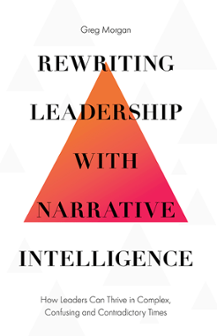Narrative intelligence
, 1, 7, 86, 96–97, 107–109, 147, 150, 169, 176, 209
artificial intelligence research perspectives
, 50–56
cognitive psychology perspectives
, 64–75
developmental history with definable set of expert “end-state” performances
, 99–100
disciplines
, 4
evolutionary life of narrative
, 95–96
existence of idiots savants, prodigies, and exceptional individuals
, 98–99
human intelligence
, 87–88, 93–94
hypothesis
, 100
identifiable core operation
, 99
implications for practice
, 105
intellectual accomplishments
, 92–93
intelligence
, 86–87, 91–92
invitation to view life as flow of interweaving narratives
, 7–44
leadership
, 4–5, 8
leadership breakthroughs with
, 210–247
learned abilities
, 3
‘multiple intelligences’ theory
, 93–95
neuroscience perspectives
, 56–64
people
, 9
philosophical hermeneutics perspectives
, 75–85
potential isolation by brain damage
, 97–98
single, general human intelligence concept
, 89–90
storied space
, 45–50
support from psychometric findings
, 100–101
susceptibility to encoding in symbol system
, 101–104
Narratives
, (see also Interweaving narratives), 1, 3, 11–14, 96
coaching
, 243–245
fallacy
, 72–73, 184
generators
, 173
identity
, 21, 82
imagining–story
, 65
knowing
, 96
language
, 63
psychology
, 10
Neural theory of metaphor
, 58
Non-linear cause-and-effect thinking
, 151
Non-manipulative influence
, 4
Non-mechanistic phenomena
, 110
Nurturing culture of narrative intelligence
, 234
blackness
, 235–236
coaching conversation
, 243–244
exercising narrative intelligence
, 236–237
fidelity of influence
, 237–243
guide for the skilled narrative coaching
, 245–246
implications for practice
, 246–247
‘paradigmatic thinking’
, 234–235
STORY approach
, 244–245
